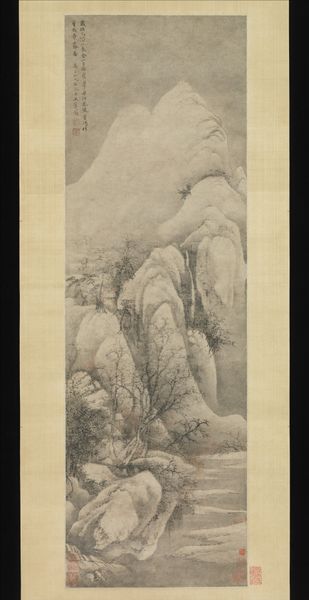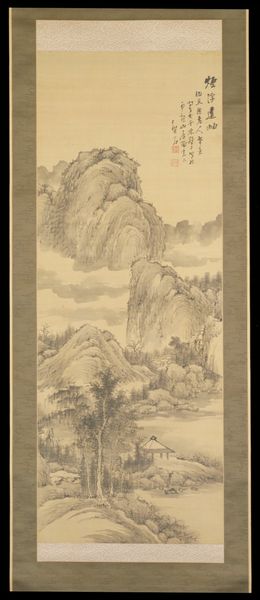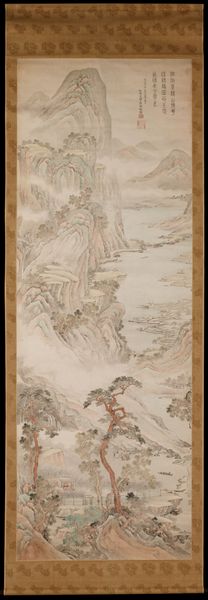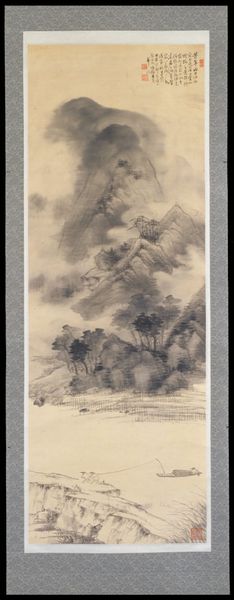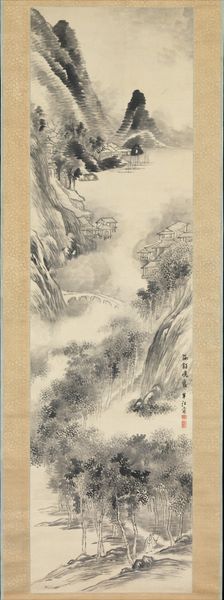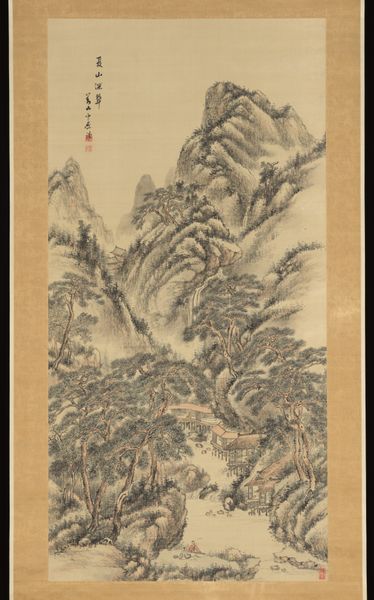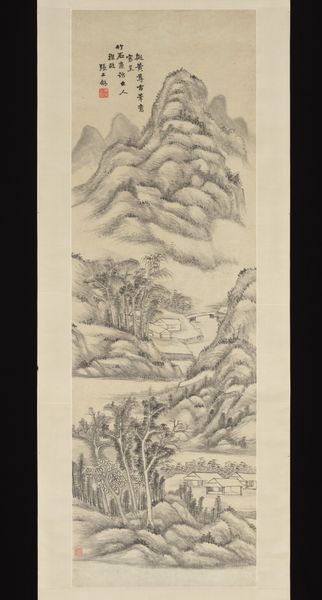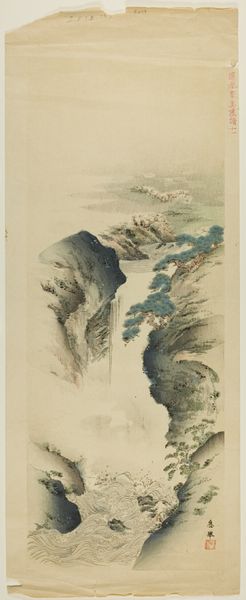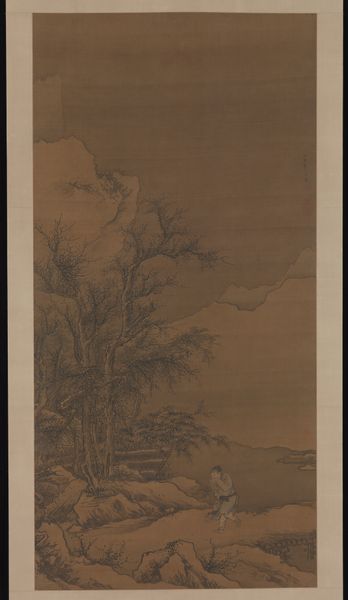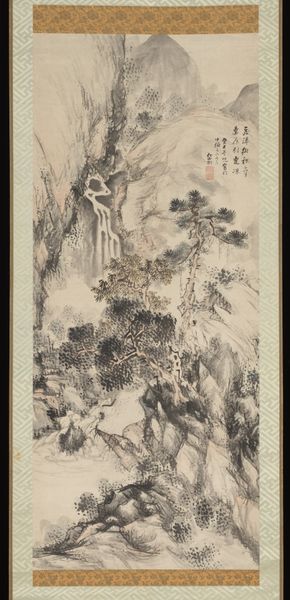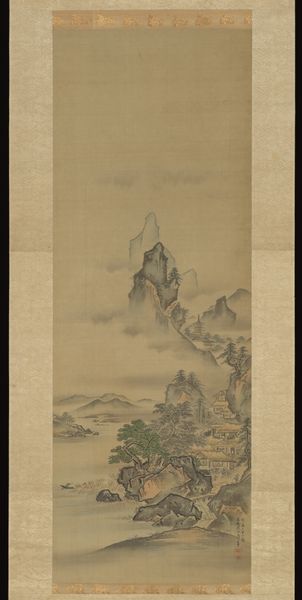
Green Mountains as the Rain Ceases 1800 - 1820
0:00
0:00
watercolor
#
asian-art
#
landscape
#
watercolor
#
orientalism
#
watercolor
Dimensions: Image: 43 11/16 × 10 7/8 in. (111 × 27.6 cm) Overall with mounting: 73 1/8 × 16 1/4 in. (185.7 × 41.3 cm) Overall with knobs: 73 1/8 × 18 9/16 in. (185.7 × 47.1 cm)
Copyright: Public Domain
Editor: "Green Mountains as the Rain Ceases" made between 1800 and 1820 by Urakami Gyokudo. It's a watercolor. Looking at it, I’m struck by the misty, almost dreamlike quality of the mountains. What do you see in this piece? Curator: The dreamlike quality is key. Gyokudo wasn't just painting mountains, but a cultural ideal. Think of the literati tradition at the time. How do you see this landscape interacting with the prevailing social and political context of early 19th century Japan? Editor: Well, I know the literati valued self-expression. Was this an escape from the rigid societal expectations? Curator: Precisely. The landscapes they depicted became symbols of freedom and individual expression, particularly within the context of neo-Confucian ideals and hierarchical social structures. The "Green Mountains," painted in this delicate style, presents nature as an idealized space, a refuge from the constraints of official life. But where do the materials fit in? What does it mean to create something in watercolor? Editor: Hmm… because watercolor is a delicate and maybe even fleeting medium, like a moment of peace snatched from a chaotic world? Curator: Yes! It reinforces this idea of nature as a transient, almost unattainable ideal, a world separate from political machinations, although inextricably tied to those conditions through its reception and patronage. Now how does seeing it displayed in a museum shape our view of that intent? Editor: I hadn’t considered that! Putting it in a museum almost enshrines that personal expression, and elevates its political statement. Curator: Exactly. And what could be more powerful than a painting that comments on socio-political structure and re-imagines our perspective of those foundations, and their relationship with the natural world? Editor: That gives me a lot to think about in terms of how the setting influences my understanding! Thanks.
Comments
No comments
Be the first to comment and join the conversation on the ultimate creative platform.
